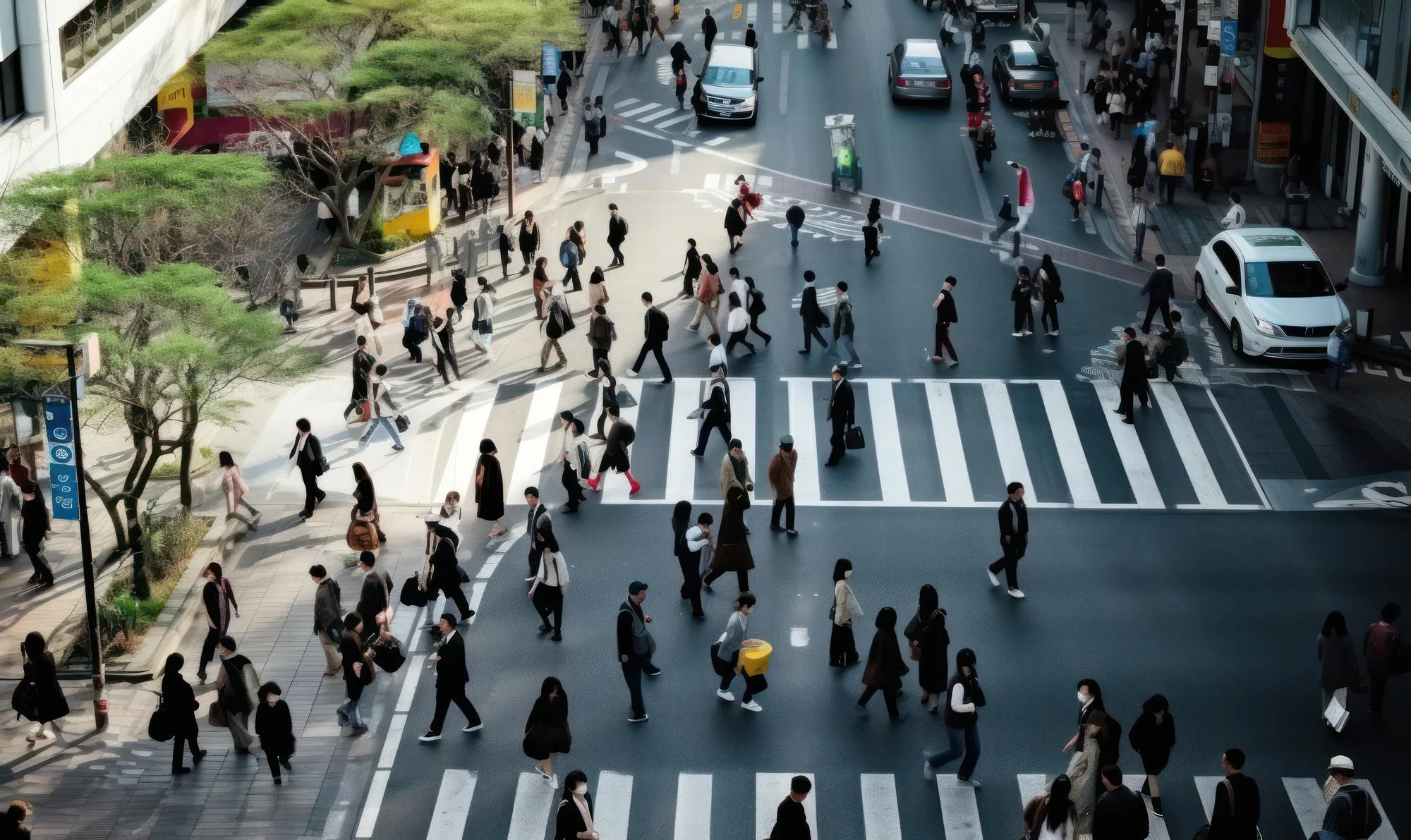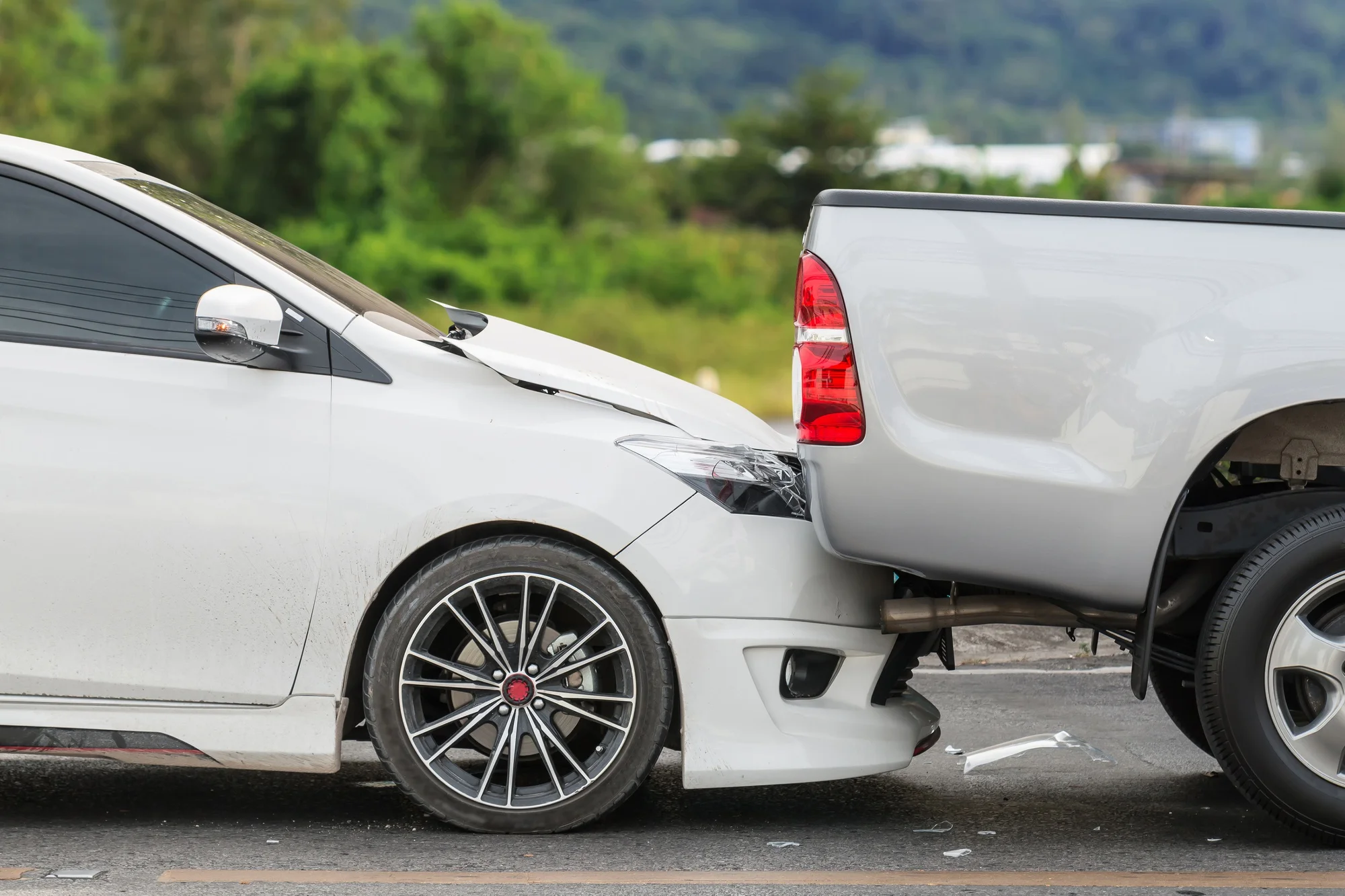The common belief that pedestrians automatically have the right of way in all traffic situations represents a significant misunderstanding of traffic laws. Under California traffic regulations, both drivers and pedestrians share mutual obligations in ensuring road safety. While vehicles must exercise heightened caution around those traveling on foot, pedestrians also bear specific legal responsibilities. The law establishes a balanced framework where neither party holds absolute right of way privileges in every scenario. This dynamic relationship means pedestrians could face liability or reduced compensation if their actions contribute to an accident, even though drivers maintain a legal duty to exercise caution regardless of a pedestrian’s behavior. Understanding these nuanced right of way rules proves essential for both drivers and pedestrians in navigating roads safely and legally.
Pedestrian Right of Way Law
The legal framework governing pedestrian movement in California centers on Vehicle Code Section 21950, which establishes fundamental guidelines for both pedestrians and motorists. This comprehensive legislation outlines mutual obligations that requires drivers to yield at both marked and unmarked intersection crosswalks while simultaneously mandating that pedestrians exercise reasonable caution. The law emphasizes a balanced approach to road safety and acknowledges that safe pedestrian crossings involves responsibilities from all parties involved. A key provision mandates that drivers maintain vigilance and adjust their vehicle’s speed when approaching crosswalks to ensure pedestrian safety regardless of circumstances. California’s Vehicle Code includes several crucial provisions designed to regulate pedestrian and vehicle interactions:
- VC 21966 – Establishes designated areas for legal pedestrian travel along public roadways and walkways
- VC 21955 – Mandates the use of available crosswalks at controlled intersections for pedestrian crossing
- VC 21954 – Sets requirements for pedestrians yielding to vehicles when crossing outside designated crosswalk areas
- VC 21970 – Prohibits vehicle operators from impeding crosswalk access through stopping or blockage
- VC 21456 – Regulates pedestrian crossing at signal controlled intersections based on traffic signal indicators
- VC 21952 – Ensures pedestrian protection while crossing sidewalks at driveway intersections
- VC 21963-21965 – Provides specialized provisions addressing the rights and protections for visually impaired pedestrians
Who is Considered a Pedestrian?
Under California law, the definition of a pedestrian extends well beyond individuals who travel by foot. The legal classification encompasses a diverse range of vulnerable road users who navigate public spaces through various non-motorized means. Understanding this broader definition proves essential for both safety considerations and legal protections. Notably, California law makes important distinctions between different types of road users to establish clear categories for who qualifies as a pedestrian and who does not.
Protected individuals who qualify as pedestrians under California law include:
- Individuals traveling by foot on public walkways and roadways
- Users of non-motorized mobility devices including skateboards and roller skates
- Persons utilizing mobility assistance devices such as wheelchairs, tricycles, or quadricycles
- Winter sport participants such as skiers and ice skaters when using designated crossings
- Users of traditional (non-electric) scooters
Important exclusions from pedestrian classification:
- Bicycle riders of any type
- Users of electric or motorized bikes
- Operators of electric scooters
- Individuals using hoverboards
This legal framework helps establish clear guidelines for right of way rules, safety protocols, and liability considerations in traffic interactions.
Responsibilities of Pedestrians
The fundamental principle of pedestrian safety rests on exercising proper duty of care when navigating roadways and public spaces. Every individual traveling on foot or by other pedestrian classified means must demonstrate responsible behavior and awareness of their surroundings to ensure both personal safety and the efficient flow of traffic. This obligation extends across all walking environments, from urban sidewalks to rural roadways. Essential safety practices for pedestrians include:
- Adherence to all posted traffic control signals and signage
- Utilization of available sidewalks for travel whenever present
- Walking against oncoming traffic when sidewalks are unavailable, maintaining maximum possible distance from vehicles
- Using designated crosswalks and intersections for street crossing
- Maintaining vigilant observation of vehicles from all approaches including those making turns
- Selecting well illuminated crossing points with clear visibility when no crosswalks are available
- Exercising heightened awareness in areas with vehicle entry/exit points such as driveways and parking facilities
What is Considered a Crosswalk?
Under California’s traffic regulations, a crosswalk encompasses any designated section of a roadway specifically allocated for pedestrian crossing where no prohibitory signage exists. These essential pathways typically feature distinctive pavement markings and serve as vital connectors between perpendicular sidewalk boundaries at standard intersections, though certain exceptions apply to street alley junctures. Safety infrastructure commonly accompanies intersection crosswalks, incorporating various traffic control mechanisms such as signal lights, warning beacons, stop signs, and additional regulatory devices to enhance pedestrian protection and manage traffic flow.
Do Pedestrian Have to Use Crosswalks
At controlled intersections featuring traffic signals, lights, or law enforcement presence, pedestrians are legally mandated to utilize available crosswalks for street crossing. This requirement specifically prohibits diagonal intersection crossing without explicit authorization from traffic control personnel or designated diagonal crosswalk markings. Though diagonal paths may occasionally be permitted under specific circumstances, pedestrians must remain vigilant and confirm their right of way before proceeding. Notably, avoiding an accessible crosswalk constitutes jaywalking under California law, which, while not classified as a criminal offense, may result in financial penalties reaching $200.
Crossing Without a Crosswalk
California law permits pedestrians to traverse roadways outside of marked crosswalks or intersections, provided specific safety conditions are met. When crossing in such locations, pedestrians must first ensure the complete absence of vehicular traffic, and in situations where vehicles are present, they must yield right of way to any approaching vehicles that could pose an immediate safety risk. The law explicitly prohibits pedestrians from departing the safety of a curb or sidewalk when oncoming vehicles lack adequate stopping distance to avoid a collision which emphasizes the paramount importance of prudent judgment in these crossing scenarios.
Do Pedestrians Always Have the Right of Way?
The misconception that pedestrians universally maintain right of way privileges require important clarification under California traffic regulations. While pedestrian protection remains a fundamental principle of traffic law, this protection becomes limited when individuals fail to comply with established pedestrian and crosswalk regulations. In instances where pedestrians engage in unsafe behaviors such as darting into traffic or creating immediate hazards, they forfeit their right of way privileges. This forfeiture carries significant legal implications, potentially resulting in liability for accidents and reduced compensation under comparative negligence principles. California Vehicle Code 29150 VC outlines specific conditions where motorists must yield to pedestrians in marked or unmarked intersection crosswalks, but simultaneously prohibits pedestrians from creating dangerous situations by suddenly abandoning safe positions, generating immediate hazards through unsafe crossing, or unnecessarily impeding traffic flow in crosswalks.
What About Blind Pedestrians?
California law extends enhanced legal protections to visually impaired pedestrians through specific provisions in personal injury statutes. When a pedestrian displays a white cane or travels with a guide dog, indicating total or partial blindness, they receive absolute right of way privileges. This heightened protection requires vehicle operators to implement all necessary safety measures to ensure the wellbeing of visually impaired pedestrians. The law treats violations of these protections as serious offenses, classifying them as misdemeanors and imposing substantial penalties that include potential incarceration for up to six months in county facilities and monetary fines ranging from $500 to $1,000.
Exceptions When Pedestrians Do Not Have the Right of Way
California traffic regulations outline specific circumstances where pedestrian right of way privileges are limited or revoked. These exceptions become particularly complex in accident scenarios, where the interpretation of “immediate hazard” can lead to challenging insurance claims and liability disputes. The ambiguity surrounding sudden pedestrian movements often results in complicated legal situations where both motorists and pedestrians may contest responsibility. Given the complexity of these cases and their potential impact on medical expense coverage and damage compensation, legal representation often becomes necessary to navigate these disputes effectively. The primary exceptions that void pedestrian right of way privileges include:
- Utilizing bike lanes when adjacent sidewalks or walking paths are available
- Crossing at intersections against traffic signals or illuminated “don’t walk” indicators
- Proceeding outside designated crosswalks at intersections
- Departing suddenly from a position of safety into traffic
- Creating immediate hazards by entering vehicle paths without warning
- Stopping unnecessarily within crosswalks, impeding traffic flow
- Attempting street crossings when nearby vehicles pose imminent danger
This legal framework helps establish clear boundaries for both pedestrian and driver responsibilities while acknowledging that real world situations often require careful analysis to determine fault and liability.
What Causes Most Pedestrian Related Vehicle Accidents?
In analyzing the primary factors behind pedestrian vehicle collisions, negligent behavior emerges as the predominant cause rather than intentional actions. Most incidents stem from inattentiveness or failure to exercise proper caution by either party involved. While deliberate vehicular assaults on pedestrians do occur, these represent a minimal percentage of total accidents. Understanding this pattern proves crucial for both pedestrian safety and legal recourse, as victims of negligence based accidents may qualify for comprehensive compensation to address their losses through proper legal channels. The establishment of negligence as the primary factor helps shape both preventative safety measures and the subsequent legal approach to securing appropriate compensation for injured parties.
What Happens if a Pedestrian Causes an Accident?
When pedestrians violate traffic laws and initiate accidents, they may face significant legal and financial consequences, regardless of sustaining more serious injuries than other parties involved. Legal liability can arise from various infractions such as crossing outside designated areas, disregarding traffic signals, or entering prohibited roadways. Under California’s comparative negligence system, responsibility for accidents often involves shared fault, where both the pedestrian and driver may bear portions of liability. This system apportions compensation based on each party’s degree of responsibility, potentially reducing a plaintiff’s recovery amount according to their percentage of fault. For instance, if a pedestrian is deemed 60% responsible for an accident resulting in $100,000 in damages, their maximum recovery would be limited to $40,000, reflecting their degree of fault. Moreover, in cases where pedestrians violate right of way rules, they might be required to compensate drivers for damages, even if the pedestrian sustained more severe injuries in the incident.
Proving Negligence and Liability in a Pedestrian Related Vehicle Accident
Establishing fault in pedestrian vehicle collisions requires comprehensive documentation and evidence collection, regardless of whether one is the motorist or pedestrian involved in the incident. Critical components of building a strong liability case include obtaining official law enforcement documentation, which often contains crucial details about the circumstances and initial findings at the scene. Additionally, gathering immediate evidence from the accident location strengthens the case substantially. This encompasses securing photographic documentation, any available surveillance footage, and gathering contact information from potential witnesses who observed the incident. This thorough approach to evidence collection plays a vital role in determining liability and ensuring appropriate legal outcomes for all parties involved.
Negligence Per Se in a Pedestrian Accident
The legal concept of negligence per se streamlines the process of establishing fault in pedestrian related accidents by creating a presumption of negligence based on traffic law violations. Under this doctrine, legal teams can expedite personal injury proceedings by demonstrating that either party breached specific traffic regulations, rather than undertaking the more complex task of proving all elements of traditional negligence. This approach significantly simplifies liability determination, as demonstrating a statutory violation – such as a driver exceeding speed limits or failing to observe traffic signals – automatically establishes the negligent behavior without requiring extensive additional evidence to prove fault. The application of negligence per se thus serves as an efficient legal mechanism for resolving pedestrian accident cases where clear violations of traffic laws exist.
Compensation Available in a Pedestrian Accident
Victims of pedestrian accidents may pursue various forms of compensation to address the comprehensive impact of their injuries. In cases resulting in fatality, surviving family members retain the right to initiate wrongful death claims against responsible drivers, seeking recompense for expenses including medical care, funeral services, lost future earnings, and the profound loss of companionship and support. Damages can include:
- Healthcare related costs incurred for treatment and rehabilitation
- Current and projected income losses due to diminished earning capacity
- Compensation for damaged personal property
- Long term disability and permanent injury impacts
- Compensation for physical pain and emotional trauma, both current and anticipated
- Loss of consortium
- Mental anguish and psychological distress resulting from the incident
This comprehensive approach to compensation aims to address both the tangible financial impacts and the intangible personal losses suffered by accident victims or their surviving family members.
Contact Mesriani Law if You Are a Pedestrian That Was Involved in an Accident
In pedestrian vehicle accidents, time sensitive evidence collection and proper legal guidance can significantly impact your ability to secure fair compensation. The complex interplay of traffic laws, liability determination, and insurance negotiations demands experienced legal representation. If you or a loved one has been involved in a pedestrian accident in California, the legal team at Mesriani Law Group possesses the expertise to navigate these intricate cases. Their understanding of pedestrian rights, traffic regulations, and comparative negligence laws enables them to build strong cases for accident victims. Contact Mesriani Law Group to receive a thorough evaluation of your case and learn about your legal options for pursuing the compensation you deserve.
Pedestrian Right of Way FAQs
Do pedestrians have the right of way when jaywalking in California?
In California, pedestrians who jaywalk forfeit their right of way privileges and may face fines up to $200 for this infraction. While drivers still maintain a duty of care to avoid accidents, pedestrians crossing outside of designated crosswalks or against traffic signals must yield to vehicles and can be held responsible for an accident.
Who always has the right of way in California?
Under California law, no party automatically maintains absolute right of way privileges in all situations, as both drivers and pedestrians share mutual obligations for road safety. However, emergency vehicles operating with lights and sirens activated are granted immediate right of way, requiring all other road users to yield promptly and safely.
Do pedestrians have the right of way in a parking lot in California?
In California parking lots, while pedestrians generally have the right of way, they must still exercise reasonable care and not create immediate hazards by suddenly entering a vehicle's path. Drivers must remain vigilant and yield to pedestrians in parking lots, but pedestrians retain responsibility for using due care and not impeding traffic unnecessarily, with both parties sharing mutual obligations for safety.
Do pedestrians always have the right of way in the US?
Pedestrians do not automatically have the right of way in all situations across the United States, as specific circumstances and state laws determine when pedestrians must yield to vehicles. While drivers typically must exercise due care around pedestrians, individuals on foot can lose their right of way privileges when violating traffic laws, crossing against signals, or creating immediate hazards through unsafe behavior.







